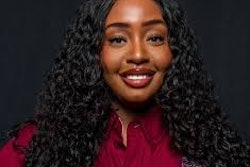Two members of Congress have proposed legislation that calls for a national campaign against domestic violence that would be spearheaded by athletes. But some sports organizations, including the National Collegiate Athletic Association (NCAA), believe the legislation unfairly suggests athletes have a propensity to engage in violence against women.
The legislation by Congresswoman Connie Morella (R-Md.) and Congressman Bernard Sanders (I-Vt.) also calls for a national summit and a multifaceted strategy involving professional and amateur sports organizations in combating domestic violence and sexual assaults. Part of the strategy would include counseling for athletes, strong disciplinary action when needed, and a public education and advertising campaign.
“Sports play such an important, positive role in our society and in the education of our children. Its stars are our children’s heroes and role models and our national icons,” Morella said, explaining her reason for introducing the legislation. But, she added, the media is constantly full of reports of athletes accused of domestic violence.
“Just as athletes have taken a strong stand in fighting drug and alcohol abuse,” she said, “isn’t it time for them to step up to the plate and take a strong stand on violence against women?”
Sanders, using similar reasoning, explained, “This legislation addresses three realities of American society: one, that we have an epidemic of domestic violence; two, that America, for better or worse, has a fascination with sports, from the Olympics to the Super Bowl to the Final Four; [and] three, that professional and collegiate athletes are viewed as sports heroes by America’s youth.
“Sports leaders, as role models, are often emulated both on and off the field, and we are asking that our national and collegiate sports leaders make it a top priority to help publicly condemn domestic violence and sexual assault and join us in a national awareness campaign,” Sanders continued. “As role models, these sports leaders can send a strong message that rough and tumble, hard-nosed competitions stops when players leave the field and that there is no excuse for domestic violence.”
According to the two representatives, domestic violence is the leading cause of injury to women and is more common than car accidents, muggings and rapes combined. It is the top reason women go to emergency rooms. Almost 4,000 women die each year of domestic violence, which cuts across all racial and economic groups.
While no one wishes to minimize the seriousness of domestic violence, some sports organizations are urging caution. The National Football League expressed a commitment to solve the societal problem of domestic abuse and sexual assault in America, but said it is a problem endemic to all parts of American society, “including–but not exclusive–to sports.”
A statement by a league spokesman continued, “We do not believe that there is an empirical or other basis for singling out athletes–professional or amateur–for targeted treatment with respect to these issues. Among other things, to single out athletes unfairly stigmatizes them by inevitably suggesting that they have a particular propensity to engage in such behavior when there is no basis for such implication.”
An NCAA official took an even bolder position, suggesting that linking sports and violence may have racial connotations. Dan Boggan, chief executive officer of the NCAA, said. “I think that there is a broader concern in this country about violence, and it should not be linked to sports It should be linked to larger issues in history and concern for making sure people are civil, regardless of what occupation they are linked to.
“It its unfair to link this to sports,” he added. “Sports are not the leading producer of violence. However, with sports stars, there is a lot [more] emphasis on their behavior than [on that of] an individual who does not have some personal notoriety or fame.”
Boggan cautioned that his position does not mean he and the NCAA are not concerned about violence. “We just want to make sure it stays in perspective. We are doing everything we can to educate people who participate in athletics about responsibility as citizens.”
He added that he had additional concern about the portrayal of Black athletes in the discussion of violence and sports. “I think there is a dual standard in the country as far as how we portray individuals,” Boggan said. “It happens in the criminal justice system all the time. When there are news reports with no mention of race and news reports that mention Black males, you have to conclude that when someone else is involved it is not important.
“It reinforces on the community that the people who are committing violence are people of color, particularly Black males, and it bothers me,” he continued. “That is how you pigeonhole people. It makes it seem, whether intentional or not, that certain groups have behavior patterns that other individuals do not.”
Boggan said the NCAA plans its own forum early next year, and domestic violence will be one topic of discussion, as will race and gender in sports. “What we are really talking about are those concerns that impact on society and also impact on sports participation,” he said. “We’re really trying to focus on the sports figure, the high profile that person has regardless of race or gender, and the set of expectations that ought to be there.
“As athletes, a lot of people are aware of what they do. Whether they want to be role models or not, they are either positive or negative in that role,” Boggan concluded.
Morella said she has heard comments similar to Boggan, “comments that seem to be defensive. `Hey, don’t single these people out. They do exemplary things.’ My response is they are the ones young people focus on. They are role models and this is what we want to accentuate. We want to use them as teachers.” As for there being a racial connections, “That is not the case at all,” Morella said. “It would be stretching to read anything like that into this. It is not a matter of color or background, it is a matter that these sports figures are who we all emulate.” Others also believe athletes can and should play a leading role in combating domestic violence.
The Center for the Study of Sport in Society at Northeastern University has created a Mentors in Violence Prevention (MVP) Project that trains college athletes to act as role models to younger males on issues traditionally considered “women’s issues”–such as rape, battering and sexual harassment.
Richard E. Lapchick, director of the center, said the MVP Project began because of concern that men were not involved in the discussion of violence and rape on college campuses, even though they were the perpetrators.
“If we could get men talking about the issue,” he said, “then we could advance the possibility of getting men involved as leaders.” Lapchick also said he is worried that athletes, particularly Black athletes, may be stereotyped as prone to violence against women.
While the headlines about domestic abuse by athletes are alarming, the actual numbers are comparatively low, according to Lapchick. During 1995, seventy-two athletes and five coaches were reportedly involved in some form of violence against women–an average of one report every five days. That pales when compared to the three million women who are battered and the million women who are raped each year.
“When that is put up against seventy-two athletes,” Lapchick said, “it doesn’t say anything about athletes in particular, but it is a huge problem for men in America.” Unfortunately, when the media reports about Black athletes committing violence against women, it “fits into the stereotype white Americans have about Black Americans,” Lapchick said. “I think we have to talk about it, because I think it has been made into a racial issue,” he said. “There is no connection, but the public is making the association. “
Part of the problem is that the media is dominated by white males, leading to biased coverage of Black athletes, suggested Lapchick. “We have to get more leagues and players and college students involved in engaging the issue of domestic violence.” “And,” he added, “we have to get some real data, as opposed to a lot of the misinformation that is out there now. I have a hope that the pro and amateur leagues will take a position as they finally did on the drug issues. And, if athletes have [a domestic violence] problem, they would be suspended and ordered to get help and not come back until…the problem is no longer there.”
Lapchick’s center has been working with the College Football Association (CFA) on producing a series of public service announcements that ran during college football games during October, National Domestic Violence Awareness Month. The announcements feature college football players condemning violence against women.
Charles M. Neinas, executive director to the CFA, said the Athletes Against Violence Campaign was viewed as an opportunity for college football to take a step forward. “After all, it is a manly sport,” he said, and we wanted to show we were concerned as a whole. We represent universities and problems associated with date rape and such are campus problems. We felt, wouldn’t it be great to use football players in a role to try to combat it.”‘
Neinas said he has heard and read about the resistance some sports organizations have had to the Morella-Sanders resolution, but college football teams have been extensively involved in community service and CFA support was merely an extension. But does such support encourage a perception that sports and violence are somehow connected? Neinas agreed that the media hype of violence by athletes does lead to a skewed public perception.
As an example, he pointed to a top official at a large midwestern University who was arrested and sentenced for selling drugs. “Nobody heard about that, right? But if it had been even a graduate assistant football coach, everybody would have heard about it, you can be assured.”
The National Football League, despite its reservations, has also aired public service announcements on domestic violence, featuring pro football players.
Sanders praised the advertisements as “a very positive first step in our efforts to recruit sports leaders to lend their voices to the growing campaign to stop domestic violence. I can’t think of a better way to deter physical abuse against women and children than to have our nation’s football heroes take to the airwaves to spread a blunt message all across America. Tough guys mix it up on the field, but they don’t beat up on their wives, girlfriends and kids.”
Sanders said he and Morella will continue plans to convene a summit on sports and non-violence in the next year. The list of supporters and endorsers for the summit is long and growing and includes numerous coaches and athletics administrators, as well as many social and anti-violence organizations. “Already, scores of health, athletic and anti-violence groups have endorsed our legislation and joined the calls for defining a prominent role for our nation’s sports industry and athletic heroes to help lead the campaign against domestic violence,” Sanders said.
One of those supporters is Lee A. McElroy, athletics director at American University. McElroy believes that a congressional summit would “increase the awareness of violence. Whether we like it or not, the vehicle of athletics is a tremendous medium for conveying a message and the message is awareness and sensitivity to domestic violence and violence towards women–and it deserves extensive investigation.”
He also said there is no concrete evidence linking athletes to violence, “but because of the interest in–and visibility of–athletics and incidents involving athletes, this is receiving a tremendous amount of attention. We can begin to explore this through athletics and come up with appropriate alternatives, options and solutions.”
Charles S. Farell, a frequent contributor to Black Issues In Higher Education, is director of the Rainbow Coalition’s Fairness in Athletics.
COPYRIGHT 1996 Cox, Matthews & Associates
© Copyright 2005 by DiverseEducation.com















